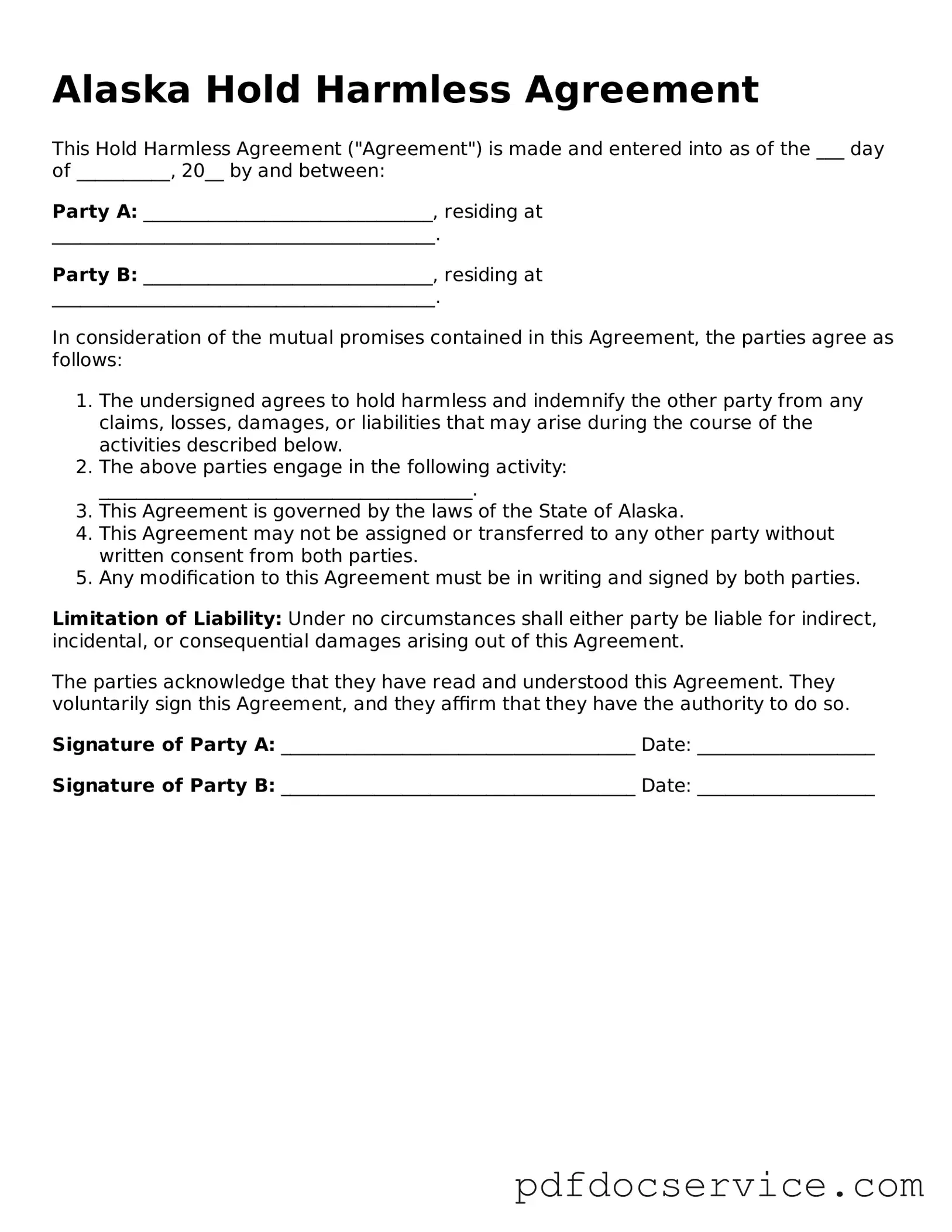What is the Alaska Hold Harmless Agreement?
The Alaska Hold Harmless Agreement is a legal document designed to protect one party from liability for certain actions or events. By signing this agreement, one party agrees not to hold the other party responsible for any damages or injuries that may occur during a specified activity or event. This type of agreement is commonly used in various situations, such as events, contracts, or activities that involve risk.
Who typically uses the Hold Harmless Agreement?
This agreement is often used by organizations, businesses, and individuals who host events or activities where there is a potential for injury or damage. For example, event organizers, sports leagues, and rental property owners frequently utilize this agreement to safeguard themselves from potential lawsuits. Participants in activities such as sports, workshops, or community events may also be asked to sign this document.
What are the main components of the agreement?
The Hold Harmless Agreement generally includes the following key components:
-
Identification of parties:
Clearly states who is involved in the agreement.
-
Description of the activity:
Outlines the specific event or activity that the agreement pertains to.
-
Liability waiver:
Details the extent to which one party agrees to waive their right to hold the other party liable.
-
Signatures:
Requires signatures from all parties involved, indicating their consent and understanding of the agreement.
Is the Hold Harmless Agreement legally binding?
Yes, the Hold Harmless Agreement is typically considered a legally binding contract, provided it meets certain requirements. These include mutual consent between the parties, a lawful purpose, and the capacity of the parties to enter into the agreement. However, enforceability can vary based on jurisdiction and specific circumstances, so it is advisable to consult with a legal professional for guidance.
Can the agreement be modified after it is signed?
Modifications to the Hold Harmless Agreement can be made, but both parties must agree to any changes. It is essential to document any amendments in writing and have both parties sign the updated agreement. This ensures clarity and helps prevent misunderstandings in the future.
What should I do if I have concerns about signing the agreement?
If you have concerns about signing the Hold Harmless Agreement, it is important to voice those concerns before signing. Discuss any questions with the other party involved. Additionally, seeking legal advice can provide clarity on your rights and responsibilities. Understanding the implications of the agreement will help you make an informed decision.
